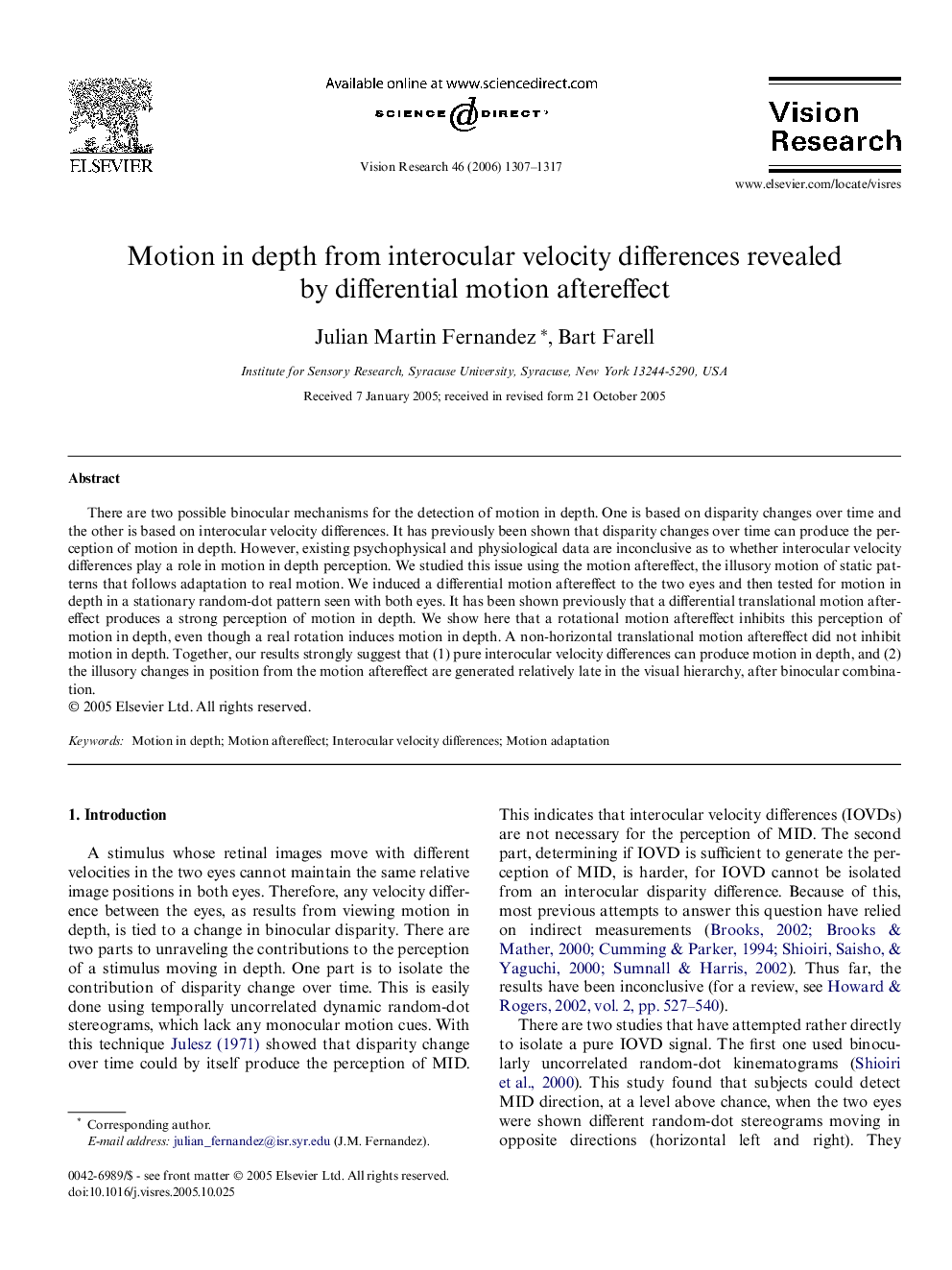| Article ID | Journal | Published Year | Pages | File Type |
|---|---|---|---|---|
| 4035302 | Vision Research | 2006 | 11 Pages |
There are two possible binocular mechanisms for the detection of motion in depth. One is based on disparity changes over time and the other is based on interocular velocity differences. It has previously been shown that disparity changes over time can produce the perception of motion in depth. However, existing psychophysical and physiological data are inconclusive as to whether interocular velocity differences play a role in motion in depth perception. We studied this issue using the motion aftereffect, the illusory motion of static patterns that follows adaptation to real motion. We induced a differential motion aftereffect to the two eyes and then tested for motion in depth in a stationary random-dot pattern seen with both eyes. It has been shown previously that a differential translational motion aftereffect produces a strong perception of motion in depth. We show here that a rotational motion aftereffect inhibits this perception of motion in depth, even though a real rotation induces motion in depth. A non-horizontal translational motion aftereffect did not inhibit motion in depth. Together, our results strongly suggest that (1) pure interocular velocity differences can produce motion in depth, and (2) the illusory changes in position from the motion aftereffect are generated relatively late in the visual hierarchy, after binocular combination.
